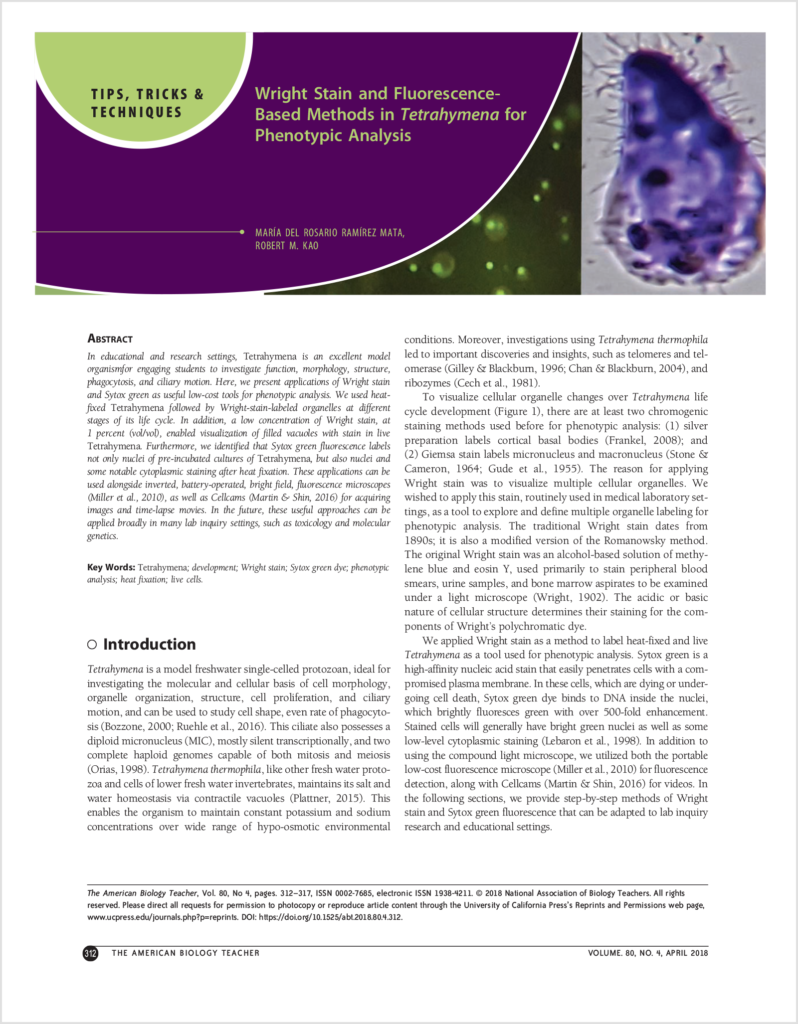Wright Stain and Fluorescence-Based Methods in Tetrahymena for Phenotypic Analysis
In educational and research settings, Tetrahymena is an excellent model organism for engaging students to investigate function, morphology, structure, phagocytosis, and ciliary motion.
Here, we present applications of Wright stain and Sytox green as useful low-cost tools for phenotypic analysis. We used heatfixed Tetrahymena followed by Wright-stain-labeled organelles at different stages of its life cycle. In addition, a low concentration of Wright stain, at 1 percent (vol/vol), enabled visualization of filled vacuoles with stain in live Tetrahymena. Furthermore, we identified that Sytox green fluorescence labels not only nuclei of pre-incubated cultures of Tetrahymena, but also nuclei and some notable cytoplasmic staining after heat fixation. These applications can be used alongside inverted, battery-operated, bright field, fluorescence microscopes (Miller et al., 2010), as well as Cellcams (Martin & Shin, 2016) for acquiring images and time-lapse movies. In the future, these useful approaches can be applied broadly in many lab inquiry settings, such as toxicology and molecular genetics.
The full PDF is available for download here: Wright Stain and Wright Stain and Fluorescence-Based Methods in Tetrahymena for Phenotypic Analysis.

